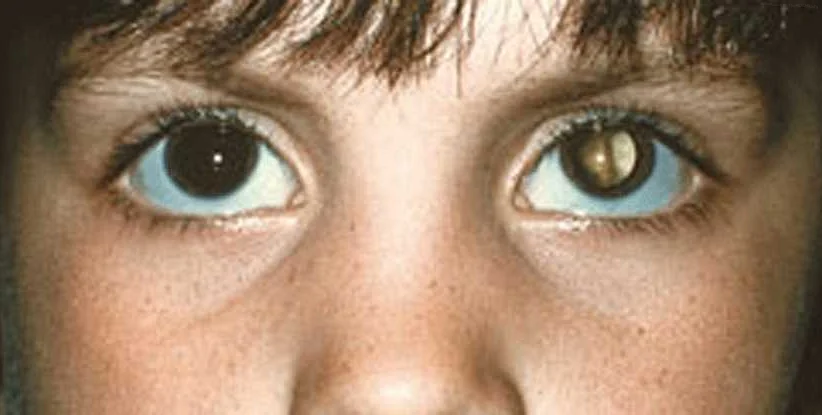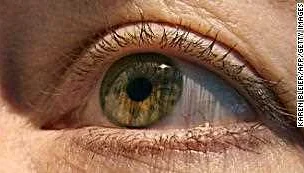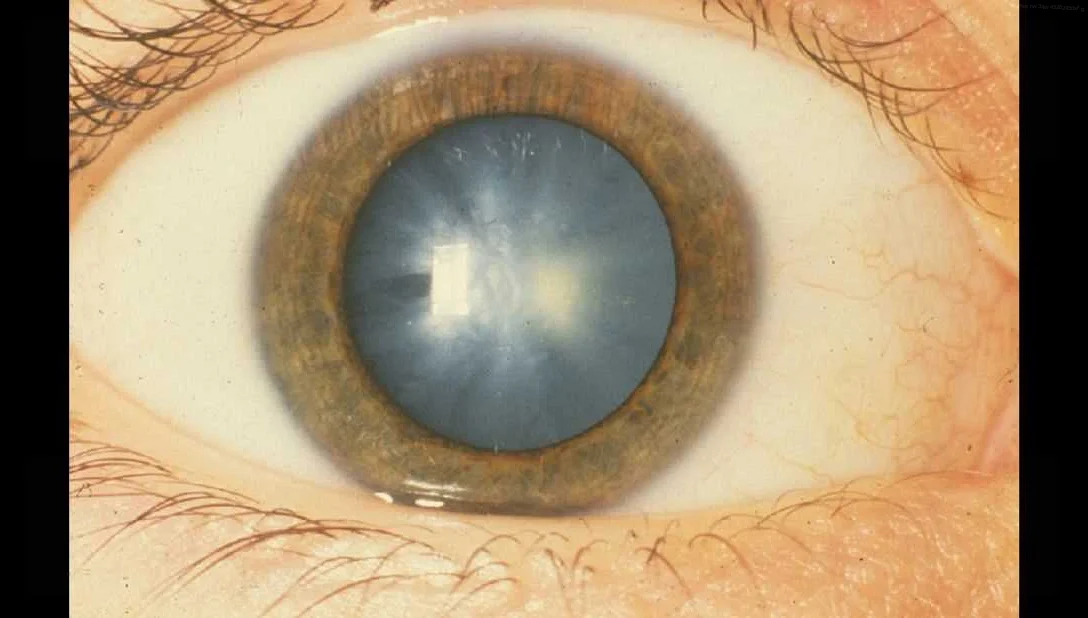What diseases are reflected in the eyes
Содержимое
Learn about the various diseases that can be detected and diagnosed through eye examination. Discover how conditions like glaucoma, cataracts, diabetes, and high blood pressure can be identified early through the appearance of the eyes. Understand the importance of regular eye check-ups in maintaining overall health and preventing serious complications.
When it comes to our health, our eyes are often considered the windows to our overall well-being. The eyes can provide valuable insights into the state of our health, as they are connected to numerous systems and organs in our body.
Various diseases and health conditions can cause changes in the appearance and function of the eyes. These changes can serve as important indicators for diagnosing and monitoring diseases, allowing for earlier detection and intervention.
The eyes are not only affected by conditions that directly impact the visual system, such as refractive errors or cataracts. They can also reflect systemic diseases like diabetes, hypertension, and autoimmune disorders, among others.
For example, in individuals with diabetes, the presence of certain eye abnormalities can indicate the development of diabetic retinopathy, a condition that affects the blood vessels in the retina. Similarly, the eyes can show signs of high blood pressure through changes in blood vessels or the appearance of hemorrhages.
By understanding the connection between various diseases and the eyes, healthcare professionals can utilize ophthalmic examinations as a valuable tool for early detection, monitoring, and management of diseases. Regular eye exams can provide a comprehensive evaluation of not only visual acuity but also the overall health of an individual.
Through advancements in technology and ongoing research, scientists and medical professionals are constantly uncovering new links between diseases and the eyes. This knowledge has the potential to revolutionize the way we approach healthcare, offering a non-invasive and accessible method for detecting and managing various conditions.
Therefore, it is crucial for individuals to prioritize regular eye exams and to communicate any changes or concerns they may have about their vision or overall health to their healthcare provider. By doing so, we can ensure the health of our eyes and potentially detect and manage diseases at their earliest stages.
Understanding Eye Health

The eyes are a vital organ that play a crucial role in our everyday lives. They allow us to see and perceive the world around us, making them an important part of our overall well-being. Understanding eye health is key to maintaining good vision and preventing various eye diseases.
There are several factors that contribute to eye health, including genetics, age, environmental factors, and lifestyle choices. Some eye conditions, such as nearsightedness, farsightedness, and astigmatism, may be genetic and inherited from parents. Others, like cataracts and macular degeneration, can develop with age.
Environmental factors, such as exposure to ultraviolet (UV) radiation from the sun and excessive screen time, can also affect eye health. It is important to protect our eyes from harmful UV rays by wearing sunglasses and using sunscreen around the eyes. Additionally, taking breaks from prolonged screen use and practicing good screen ergonomics can help reduce eye strain.
Lifestyle choices, such as diet and exercise, can also impact eye health. A diet rich in fruits, vegetables, and omega-3 fatty acids can provide the necessary nutrients for healthy eyes. Regular exercise promotes good blood circulation, which is essential for maintaining proper eye function.
Regular eye exams are crucial for detecting and preventing eye diseases. Eye doctors can identify early signs of conditions like glaucoma, diabetic retinopathy, and dry eye syndrome. Early detection allows for prompt treatment, which can help prevent vision loss and other complications.
In conclusion, understanding eye health is essential for maintaining good vision and preventing eye diseases. By being aware of the factors that contribute to eye health and taking necessary precautions, we can ensure the well-being of our eyes and enjoy clear vision for years to come.
Exploring the Connection Between Diseases and the Eyes

Our eyes are often considered the windows to our soul, but they can also provide valuable insights into our overall health. It’s fascinating to discover the link between various diseases and the eyes, as they can serve as early indicators or warning signs of underlying health conditions.
One example of this is diabetes. Diabetic retinopathy is a condition that affects the blood vessels in the retina, which can lead to vision loss if left untreated. Regular eye exams can help detect this condition early on, allowing for prompt treatment and management of diabetes.
Another disease that can be detected through eye examinations is high blood pressure. Hypertensive retinopathy occurs when the blood vessels in the retina become damaged due to high blood pressure. By examining the blood vessels in the eyes, doctors can get a glimpse into a patient’s overall cardiovascular health.
Furthermore, the eyes can also provide clues about autoimmune diseases. For example, uveitis is an inflammation of the uvea, a layer of the eye that contains many blood vessels. This condition can be associated with autoimmune disorders such as rheumatoid arthritis or lupus.
Additionally, certain eye conditions, such as cataracts or glaucoma, have been linked to other systemic diseases. Cataracts, the clouding of the lens, can sometimes be an early indicator of diabetes. Glaucoma, on the other hand, has been associated with conditions such as diabetes, hypertension, and high cholesterol.
It is important to note that while the eyes can provide valuable insights into our health, they are not definitive diagnostic tools. They serve as indicators that can prompt further investigation and evaluation by healthcare professionals.
In conclusion, exploring the connection between diseases and the eyes can provide valuable information and early warning signs of underlying health conditions. Regular eye exams are crucial in detecting these potential diseases and allowing for early intervention. So, the next time you look into someone’s eyes, remember that they could be telling you much more than meets the eye.
Common Eye Diseases and their Symptoms

When it comes to eye diseases, there are several common conditions that can affect someone’s vision and overall eye health. It’s important to be aware of these diseases and their symptoms in order to seek proper medical attention and treatment. Here are some of the most common eye diseases:
- Cataracts: Cataracts occur when the lens in the eye becomes cloudy, causing blurry vision and difficulty seeing at night. Other symptoms include sensitivity to light and seeing halos around lights.
- Glaucoma: Glaucoma is a condition where the optic nerve is damaged, often caused by increased pressure in the eye. Symptoms can include gradual loss of peripheral vision, tunnel vision, blurred vision, and eye pain.
- Macular degeneration: Macular degeneration affects the central part of the retina, leading to loss of central vision. Symptoms may include blurred or distorted vision, blind spots, and difficulty recognizing faces.
- Dry eye syndrome: Dry eye syndrome occurs when the eyes do not produce enough tears or the tears evaporate too quickly. Symptoms include dryness, itchiness, redness, and a gritty feeling in the eyes.
- Diabetic retinopathy: Diabetic retinopathy is a complication of diabetes that affects the blood vessels in the retina. Symptoms may include blurred vision, floaters, dark spots, and difficulty seeing at night.
If you experience any of these symptoms or notice any changes in your vision, it’s important to consult with an eye care professional for a proper diagnosis and treatment plan. Regular eye exams are also crucial for early detection and prevention of these common eye diseases.
Eye Examination: A Window into Your Overall Health

An eye examination is not just about checking your vision. It can also provide valuable insights into your overall health. The eyes are often called the windows to the soul, but they are also windows to the body’s health.
During an eye examination, optometrists and ophthalmologists can detect signs of various systemic diseases, such as diabetes, hypertension, and even certain types of cancer. For example, changes in the blood vessels in the retina may indicate high blood pressure or diabetes. The eyes can also reveal early signs of conditions like rheumatoid arthritis, multiple sclerosis, and thyroid problems.
One of the key parts of an eye examination is the dilated eye exam. In this procedure, the doctor uses special eye drops to widen the pupil, allowing for a more thorough examination of the retina and optic nerve. By examining these areas, eye care professionals can detect signs of eye diseases like glaucoma, macular degeneration, and diabetic retinopathy. These conditions can have a significant impact on vision and overall health if left untreated.
Furthermore, an eye examination can also uncover signs of ocular allergies, dry eye syndrome, and other eye-related conditions. By addressing these issues, eye care professionals can improve your overall eye health and quality of life.
In conclusion, an eye examination is not only important for maintaining good vision but can also serve as an early detection tool for various systemic diseases. By regularly visiting your eye care professional, you can ensure that your eyes are in optimal health and catch any potential health concerns before they become more serious. So, don’t forget to schedule your next eye exam!
Discovering the Subtle Signs in the Eyes

When it comes to detecting diseases, the eyes can reveal more than we might think. By closely examining the eyes, medical professionals are able to identify subtle signs that can indicate the presence of various health conditions.
One of the key indicators in the eyes is the presence of redness or inflammation. This can be a sign of allergies, conjunctivitis, or even an underlying autoimmune disorder. Inflammation in the eyes can also be an early sign of certain systemic diseases such as rheumatoid arthritis or lupus.
The color of the eyes can also provide valuable insights. For example, yellowing of the whites of the eyes, known as jaundice, is a common symptom of liver disease. Furthermore, a yellowish ring around the cornea, called an arcus senilis, is often seen in individuals with high cholesterol levels or heart disease.
Another important aspect to consider is the size and shape of the pupils. Abnormalities in pupil size can indicate neurological conditions or even drug abuse. Additionally, a drooping or uneven eyelid could be a sign of a more serious condition such as a stroke or a tumor.
Furthermore, the presence of certain patterns or pigments in the eyes can provide clues about a person’s overall health. For example, small yellow spots on the retina called drusen can indicate the early stages of age-related macular degeneration. Similarly, a grayish ring around the iris, called a Kayser-Fleischer ring, is a characteristic finding in individuals with Wilson disease.
Overall, the eyes serve as windows to our health, reflecting both minor and major health conditions. Regular eye exams, therefore, play a crucial role in identifying and treating diseases at earlier stages, improving outcomes and quality of life for patients.